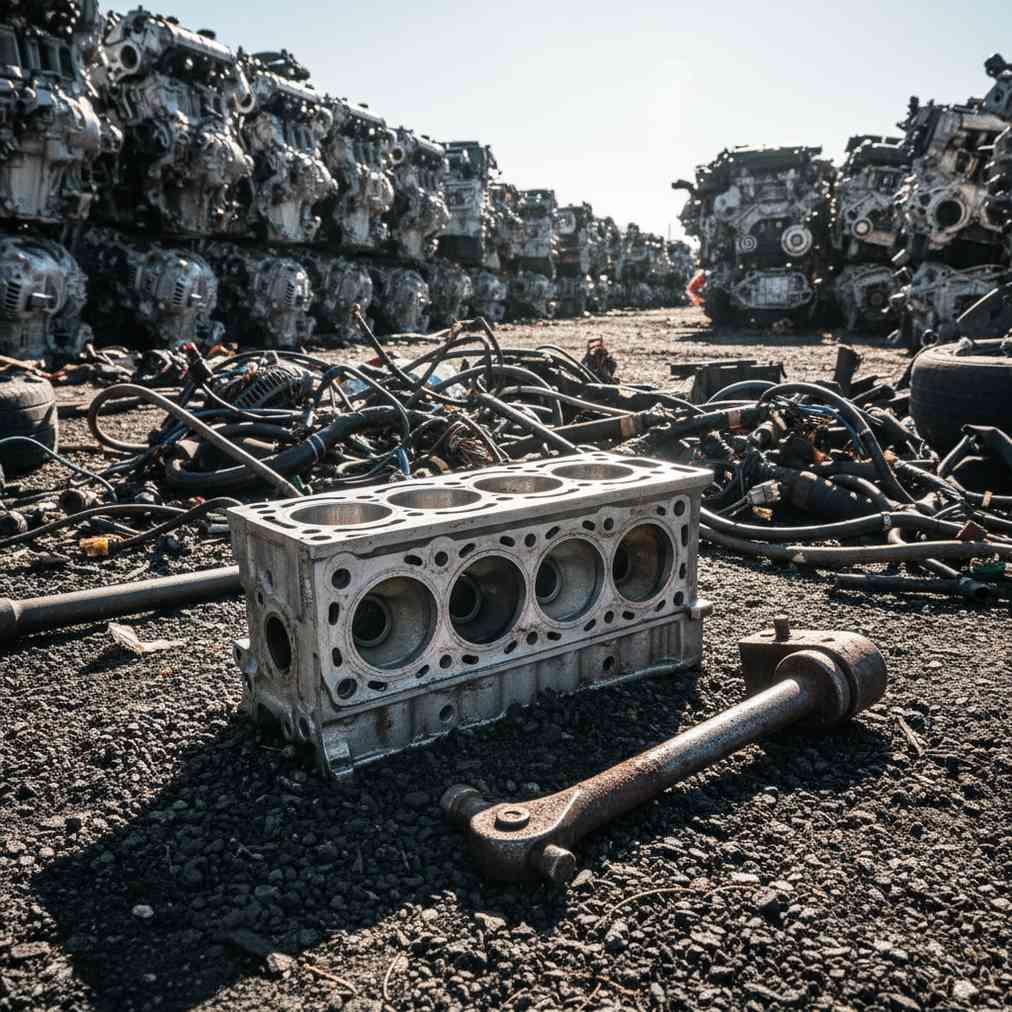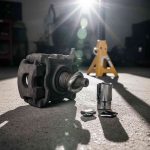Understanding U-Pull-It Salvage Yard Etiquette
Self-service salvage yards, commonly known as U-Pull-It yards, represent a unique community resource where automotive enthusiasts, DIY mechanics, and budget-conscious car owners can find affordable used auto parts. However, these shared spaces require mutual respect and proper etiquette to remain functional for everyone. Understanding what NOT to do at these facilities is crucial for maintaining a positive environment and ensuring the inventory remains available for future customers.
According to recent research methods examining salvage yard behavior, the most common complaints stem from customers who damage valuable parts while extracting other items, create safety hazards, or leave messes that impact other visitors’ experiences.
The Four Cardinal Sins of Salvage Yard Behavior
1. Destroying Good Parts to Access Others
This represents the most egregious offense you can commit at any U-Pull-It salvage yard. The scenario typically unfolds when someone needs a small, inexpensive part but resorts to destructive methods to access it.
| Wrong Approach | Right Approach | Impact |
|---|---|---|
| Smashing intake manifold with hammer to reach lifter | Carefully remove valve cover, set aside cam and journals | Preserves $50-100 manifold for next customer |
| Cutting through wiring harness completely | Leave adequate pigtail length for splicing | Maintains connector usability |
| Breaking plastic trim to remove radio | Use proper trim removal tools | Preserves dashboard integrity |
Professional mechanics and experienced DIYers understand that patience during disassembly protects valuable inventory. When you need that $5 lifter, taking an extra 15 minutes to properly remove surrounding parts prevents destroying a $75 intake manifold that another customer might desperately need.
2. Careless Wiring Harness Destruction
Electrical connectors and wiring harnesses represent some of the most valuable and hard-to-find parts in modern vehicles. When you need a specific module or sensor, the temptation to simply cut the wiring close to the desired part can be overwhelming, especially when time is limited.
“I’ve seen people cut ECM harnesses right at the connector, leaving nothing but two inches of wire. That renders a $200 harness completely useless for the next person who needs those same connectors for a splice repair.”
– Experienced salvage yard customer
The proper approach involves leaving adequate pigtail length – typically 6-8 inches of wire attached to connectors. This allows subsequent customers to perform proper splice repairs when installing used modules in their vehicles.
3. Creating Hazardous Walking Conditions
Salvage yards already present inherent safety challenges with uneven terrain, sharp metal edges, and automotive fluids. When customers compound these hazards by creating additional obstacles, the environment becomes dangerous for everyone.
- Leaving parts scattered in walkways between vehicles
- Abandoning doors, hoods, and trunk lids open during rain or wind
- Discarding heavy parts like brake rotors or CV axles randomly
- Creating oil spills from improperly drained parts
- Leaving broken glass from accidentally damaged windows
These behaviors not only create safety hazards but also damage interior parts when rain enters open vehicles. Quality research shows that data collection methods reveal significant correlation between yard cleanliness and customer satisfaction rates.
4. Arriving Unprepared and Borrowing Tools
Perhaps nothing irritates experienced salvage yard customers more than being approached by someone asking to borrow basic tools. This behavior demonstrates poor planning and creates multiple problems:
| Problem | Impact on Community | Liability Issue |
|---|---|---|
| Interrupts other customers’ work | Reduces efficiency for prepared visitors | Tool damage responsibility unclear |
| Creates safety risks with unfamiliar tools | Potential injuries affect yard operations | Insurance complications |
| Tools left unattended get stolen | Good Samaritans lose equipment | Theft disputes arise |
Professional salvage yard visitors understand that bringing appropriate tools is fundamental preparation. Whether you’re visiting LKQ Pick Your Part Houston or Pull-A-Part Knoxville, arriving with a complete tool kit demonstrates respect for the community and ensures you can complete your project efficiently.
Essential Tools Every Salvage Yard Visitor Should Bring
Proper preparation prevents the need to borrow tools and demonstrates respect for other customers’ time and equipment. Based on extensive field experience and data analysis techniques, here are the essential tools for any salvage yard visit:
- Socket set with extensions (metric and standard sizes)
- Combination wrenches (10mm through 19mm minimum)
- Screwdriver set (Phillips and flathead, various sizes)
- Wire cutters and strippers for electrical work
- Pry bars and trim removal tools for interior parts
- Work gloves and safety glasses for protection
- Flashlight or headlamp for dark areas under hoods
- Penetrating oil for stuck bolts and fasteners
Advanced Etiquette Guidelines for Community Harmony
Respecting “Dibs” and Prior Claims
When you arrive at a salvage yard and see someone actively working on a vehicle, proper etiquette requires acknowledging their presence before beginning work on the same car. This unwritten rule prevents conflicts and ensures efficient part removal.
Simply approach the person and ask: “Are you planning to take the alternator from this car?” Most customers appreciate this courtesy and will either confirm their intentions or let you know the part is available.
Glass Damage Protocol
Breaking glass accidentally happens, but intentionally smashing windows to access interior parts violates both safety protocols and cost considerations. Many yards charge customers for glass damage, and broken glass creates safety hazards for future visitors.
When glass breakage occurs, responsible customers:
- Report the incident to yard management immediately
- Clean up debris to prevent injuries
- Accept financial responsibility for replacement costs
- Document the location for other customers’ awareness
Time Management and Closing Considerations
Rushing near closing time leads to poor decisions, damaged parts, and safety incidents. Experienced customers understand that arriving early provides adequate time for careful disassembly and proper cleanup.
Whether you’re visiting U-Pull-and-Pay Orlando or Southern Auto Salvage Atlanta, planning your visit with sufficient time prevents the need to rush through part removal.
Financial Considerations and Hidden Costs
Understanding the financial impact of poor salvage yard behavior helps explain why these etiquette rules matter beyond simple courtesy. When you destroy valuable parts, you’re effectively removing inventory that supports the yard’s business model and other customers’ needs.
| Destroyed Part | Typical Value | Customer Impact | Yard Revenue Loss |
|---|---|---|---|
| Intake Manifold | $75-150 | Must buy new at $300+ | Direct inventory loss |
| Wiring Harness | $50-200 | Difficult splice repairs required | Multiple connector losses |
| Dashboard Assembly | $100-300 | Interior restoration complicated | High-value part eliminated |
| Door Panel | $25-75 | Trim pieces unavailable | Multiple part losses |
These financial considerations become particularly important when you’re looking to sell a junk car for cash, as yards evaluate vehicles based on their potential part value. Customers who consistently damage inventory impact the yard’s ability to offer competitive prices for incoming vehicles.
Regional Variations in Salvage Yard Culture
Different regions may have specific cultural norms and expectations beyond universal etiquette rules. Understanding these variations helps when visiting junkyards near me in unfamiliar areas.
For example, yards in industrial areas like Houston Auto Recyclers may have different peak hours and customer demographics compared to suburban locations like U-Pull-R-Parts in Minnesota.
Weather-Related Considerations
Regional weather patterns affect salvage yard etiquette expectations. In areas prone to sudden rain, leaving doors and hoods open becomes particularly problematic as water damage can ruin interior parts and electrical components.
- Southern climates: Heat affects working hours and tool temperatures
- Northern regions: Snow and ice create additional safety considerations
- Coastal areas: Salt corrosion makes careful handling more critical
- Desert locations: Extreme temperatures require additional safety measures
Technology and Modern Salvage Yard Etiquette
Modern salvage yards increasingly incorporate technology for inventory management and customer service. Understanding how to respectfully interact with these systems demonstrates advanced etiquette awareness.
Many facilities like LKQ Pick-A-Part Ontario now offer online inventory systems and mobile apps. Using these tools properly reduces the need to disturb staff with basic questions about part availability and pricing.
Digital Documentation Best Practices
Taking photos for reference purposes is generally acceptable, but certain guidelines apply:
- Avoid photographing other customers without permission
- Don’t document security measures or sensitive areas
- Use photos for parts identification rather than sharing publicly
- Respect yard policies regarding commercial documentation
Environmental Responsibility in Salvage Yards
Environmental consciousness represents an often-overlooked aspect of salvage yard etiquette. These facilities serve crucial environmental functions by recycling automotive parts and properly disposing of hazardous materials.
According to research documentation, proper fluid handling and waste management significantly impact environmental outcomes in automotive recycling operations.
Fluid Management Protocols
When removing parts that contain automotive fluids, responsible customers take steps to prevent environmental contamination:
| Fluid Type | Proper Handling | Environmental Impact |
|---|---|---|
| Engine Oil | Drain into provided containers | Prevents soil contamination |
| Coolant | Capture in appropriate receptacles | Protects groundwater |
| Brake Fluid | Avoid spills on ground | Prevents paint and soil damage |
| Power Steering Fluid | Use absorbent materials for cleanup | Maintains yard cleanliness |
Building Long-Term Relationships with Salvage Yards
Establishing positive relationships with salvage yard staff and management provides long-term benefits beyond simple part acquisition. Regular customers who demonstrate proper etiquette often receive preferential treatment, advance notice of valuable inventory, and assistance with difficult part removal.
These relationships become particularly valuable when searching for rare parts or planning major restoration projects. Staff members remember customers who consistently demonstrate respect for the facility and other visitors.
Professional Networking Opportunities
Salvage yards serve as informal networking hubs for automotive professionals, mechanics, and enthusiasts. Proper etiquette facilitates valuable connections that can lead to:
- Part trading opportunities with other customers
- Technical knowledge sharing about specific repairs
- Referrals to trusted mechanics and service providers
- Access to private collections and specialty parts
- Bulk purchasing opportunities for commercial customers
Conclusion: Becoming a Valued Community Member
Mastering salvage yard etiquette transforms you from a simple customer into a valued community member who contributes positively to the shared resource environment. By avoiding destructive behaviors, preparing properly with appropriate tools, and demonstrating respect for both inventory and fellow customers, you help maintain the viability and accessibility of these crucial automotive resources.
Remember that salvage yards like Pick-N-Pull Sacramento and Victory Auto Wreckers depend on community cooperation to remain sustainable and profitable. Your adherence to proper etiquette directly impacts their ability to continue serving DIY mechanics, automotive enthusiasts, and budget-conscious vehicle owners.
The investment in proper tools, respectful behavior, and environmental consciousness pays dividends through better part availability, safer working conditions, and stronger relationships within the automotive community. Whether you’re a weekend warrior tackling your first major repair or a professional mechanic sourcing parts for customer vehicles, following these guidelines ensures that salvage yards remain valuable resources for everyone.





Leave a Reply
You must be logged in to post a comment.